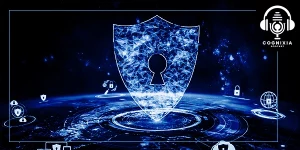In the rapidly evolving landscape of enterprise cybersecurity, a transformative paradigm is emerging that fundamentally challenges decades of conventional security thinking. Just as the digital revolution once transformed how your organization approached computing infrastructure, Zero Trust Architecture represents a similarly profound shift in how you must conceptualize, implement, and manage cybersecurity in the modern enterprise environment.
This strategic transformation extends far beyond incremental security improvements or tactical technology deployments. Zero Trust Architecture signals a complete reimagining of your organization’s security posture, moving from legacy perimeter-based models to dynamic, identity-centric frameworks that align with the realities of today’s distributed, cloud-first, mobile-enabled business operations.
As cyber threats evolve in sophistication and scale, your organization must adopt security architectures that not only protect against current threats but also provide the adaptability and resilience necessary to address future challenges. The stakes could not be higher, as your ability to successfully implement Zero Trust principles may well determine your competitive position and operational continuity in an increasingly digital marketplace.
Limitations of Traditional Perimeter Security Models
Your organization has likely operated under conventional perimeter security assumptions for years, perhaps discovering what many enterprises have learned through costly security incidents: these traditional approaches demonstrate limited effectiveness against modern cyber threats. The challenge lies not in the individual security technologies themselves but in the fundamental approach to threat modeling and access control that underpins legacy security architectures.
Traditional perimeter-based security models treat the enterprise network boundary as the primary security control point. It operates assuming that everything inside the perimeter can be trusted, while everything outside is a potential threat. This castle-and-moat approach worked reasonably well when your employees accessed applications from fixed office locations and your data resided in controlled data center environments.
However, this approach fundamentally fails to address the realities of contemporary enterprise operations. Your modern workforce operates from distributed locations, accessing cloud-based applications through various devices and network connections. Your business processes span multiple cloud platforms, integrate with third-party services, and support complex partner ecosystems that blur traditional organizational boundaries.
The perimeter model’s most critical vulnerability lies in its binary trust assumption. Once attackers breach your network perimeter—and sophisticated threat actors will eventually succeed—they can move laterally through your environment with minimal resistance. Recent high-profile security incidents demonstrate how attackers exploit this lateral movement capability to access sensitive systems, exfiltrate valuable data, and establish persistent footholds within enterprise networks.
Understanding Zero Trust Architecture: A Paradigm Shift in Security Philosophy
Zero Trust Architecture represents a fundamental philosophical transformation in how your organization approaches cybersecurity challenges. This strategic framework operates on the principle that trust must be explicitly verified rather than implicitly assumed, regardless of user location, device type, or network connection. Every access request undergoes rigorous authentication, authorization, and continuous validation processes before gaining access to organizational resources.
This paradigm shift transforms your security model from reactive perimeter defense to proactive, intelligence-driven access control. Instead of focusing primarily on keeping threats outside your network, Zero Trust Architecture assumes that threats exist both inside and outside your environment and implements comprehensive controls to limit their potential impact.
Zero Trust Architecture treats every interaction within your technology ecosystem as potentially suspicious, requiring explicit verification of identity, device security posture, and behavioral patterns before granting access to specific resources. This approach fundamentally changes how you design security controls, moving from broad network-level protections to granular, resource-specific access policies.
The architecture’s intelligence-driven approach enables dynamic risk assessment and adaptive access control based on real-time threat intelligence, user behavior analysis, and environmental context. Your security posture evolves continuously as the system learns from user patterns, identifies anomalies, and adjusts protection mechanisms accordingly.
Core Architectural Components That Define Zero Trust Excellence
Zero Trust Architecture distinguishes itself through several foundational components that collectively create a comprehensive security framework for your enterprise environment. Identity-centric security forms the cornerstone of Zero Trust implementation, where every user, device, application, and service must establish and maintain a verified identity throughout their interaction with your systems.
This identity-centric approach extends beyond traditional authentication mechanisms to encompass behavioral analysis, device fingerprinting, and continuous identity verification processes. Your organization benefits from security controls that adapt to user behavior patterns, detect anomalous activities, and respond appropriately to potential identity compromise scenarios.
Microsegmentation capabilities enable your organization to create granular security zones throughout your network infrastructure, isolating critical applications, sensitive data repositories, and high-value systems from general network access. This architectural approach ensures that the compromise of one system does not automatically provide access to other resources within your environment.
Dynamic policy enforcement ensures that access controls adapt continuously based on real-time risk assessments, threat intelligence, and behavioral analysis. Your security policies become living documents that evolve with changing threat landscapes and business requirements rather than static rules that quickly become obsolete.
Comprehensive monitoring and analytics provide unprecedented visibility into all activities within your environment, enabling your security teams to detect threats quickly, investigate incidents thoroughly, and respond effectively to emerging security challenges. This visibility extends across all technology layers, from network communications to application interactions and data access patterns.
Strategic Business Imperative for Zero Trust Adoption
Zero Trust Architecture addresses critical business challenges that extend far beyond traditional cybersecurity concerns. Your organization operates in an environment where digital transformation initiatives drive competitive advantage, but these same initiatives expand attack surfaces and create new security vulnerabilities that legacy approaches cannot adequately address.
The strategic importance of Zero Trust becomes apparent when you consider the evolving threat landscape that your organization faces. Advanced persistent threats, nation-state actors, and sophisticated cybercriminal organizations have developed techniques that easily circumvent traditional perimeter defenses. Zero Trust provides multiple layers of verification and validation that significantly increase the difficulty and cost of successful attacks.
Regulatory compliance requirements continue to intensify across industries, with many frameworks now explicitly requiring security controls that align with Zero Trust principles. Your organization’s ability to demonstrate comprehensive access controls, continuous monitoring, and data protection measures becomes essential for maintaining regulatory compliance and avoiding significant financial penalties.
Business continuity considerations make Zero Trust Architecture particularly valuable for your organization’s operational resilience. Whether facing targeted cyber attacks, natural disasters, or global disruptions that require rapid shifts to remote operations, Zero Trust ensures that security controls remain effective regardless of how and where your employees access organizational resources.
Enterprise Adoption Acceleration Across Industry Sectors
Organizations across diverse industry sectors have begun embracing Zero Trust Architecture as their primary security strategy, driven by recognition that traditional security models cannot adequately protect modern business operations. Financial services institutions have led this adoption wave, implementing comprehensive Zero Trust strategies to protect customer data, comply with stringent regulations, and maintain competitive advantages in digital banking markets.
Healthcare organizations have accelerated Zero Trust implementation to protect patient information, comply with privacy regulations, and support telemedicine initiatives that expand access surfaces beyond traditional clinical environments. These implementations demonstrate how Zero Trust enables business innovation while maintaining robust security controls.
Technology companies have embraced Zero Trust to protect intellectual property, secure development environments, and enable distributed workforce models that attract top talent regardless of geographic location. Government agencies have prioritized Zero Trust implementation as part of national cybersecurity strategies, creating market momentum that accelerates private sector adoption.
The adoption acceleration reflects growing recognition that Zero Trust is not merely a security improvement but a business enabler that supports digital transformation, operational efficiency, and competitive positioning. Organizations implementing Zero Trust report improved incident response capabilities, reduced security operational overhead, and enhanced ability to support dynamic business requirements.

Enabling Distributed Workforce and Cloud-First Operations
Zero Trust Architecture has proven essential for organizations seeking to support distributed workforce models and cloud-first technology strategies effectively. Traditional security approaches struggle to protect remote workers who access organizational resources from uncontrolled network environments using diverse devices and internet connections.
Zero Trust solves these challenges by focusing on identity verification and device security posture rather than network location or perimeter controls. Your employees can access necessary resources securely from any location without compromising your security posture or requiring complex virtual private network configurations that impact productivity and user experience.
Cloud adoption becomes significantly more secure and manageable with Zero Trust implementation. As your organization migrates applications and data to various cloud platforms, Zero Trust provides consistent security controls that operate effectively regardless of where resources reside. The architecture ensures that cloud-based applications receive the same rigorous security protections as on-premises systems while enabling the flexibility and scalability that drive cloud adoption strategies.
Zero Trust also facilitates hybrid operational models that have become standard across many industry sectors. Whether your employees work in traditional office environments, remote locations, or flexible arrangements that combine multiple work modalities, Zero Trust provides consistent security controls that adapt to changing locations, devices, and access patterns without requiring manual intervention or complex reconfiguration.
Foundational Principles That Guide Zero Trust Implementation
Zero Trust Architecture operates according to several fundamental principles that guide implementation decisions and ongoing operational practices. The principle of explicit verification requires that every access request undergo comprehensive authentication and authorization processes, regardless of the user’s previous access history, current network location, or organizational role.
Dynamic risk assessment ensures that access controls adjust continuously based on real-time threat intelligence, behavioral analysis, and environmental context. Your security posture adapts automatically to changing risk profiles, emerging threats, and evolving business requirements without requiring manual policy updates or administrative intervention.
The assume breach mentality fundamentally transforms how your organization designs and implements security controls. Instead of focusing exclusively on preventing security incidents, Zero Trust assumes that attackers will eventually gain some level of access to your environment and implements comprehensive controls to limit lateral movement, detect malicious activities, and minimize potential damage.
Least privilege access extends beyond user permissions to encompass applications, services, automated processes, and system-to-system communications. Every component of your technology infrastructure operates with the minimum privileges necessary to perform designated functions, dramatically reducing the potential impact of compromised systems or insider threats.
Data-centric protection ensures that security controls travel with your information regardless of where it resides, how it gets accessed, or through which systems it flows. Rather than relying primarily on network-based protections, Zero Trust focuses on protecting data through encryption, access controls, and usage monitoring that remain effective across diverse infrastructure environments.
Strategic Implementation Framework for Zero Trust Success
Implementing Zero Trust Architecture requires a comprehensive strategic approach that balances security improvements with operational continuity and business requirements. Your implementation strategy should begin with a thorough assessment of the current security posture, identification of critical assets and processes, and a clear understanding of existing vulnerabilities that Zero Trust can address.
Identity and access management form the foundation of successful Zero Trust implementation. Your organization must establish robust identity verification systems capable of handling authentication and authorization requirements for all users, devices, applications, and services within your environment. This foundation often requires significant upgrades to existing identity management platforms or implementation of new systems that support modern authentication methods and continuous verification processes.
Network segmentation and micro-segmentation implementation follow identity management establishment, as your organization begins creating granular security zones that isolate critical applications, sensitive data repositories, and high-value systems. This process requires careful planning to ensure that legitimate business functions continue operating effectively while unauthorized access becomes significantly more difficult to achieve.
Device management and security posture assessment represent critical implementation components that ensure only trusted, compliant devices can access your resources. This includes implementing comprehensive device registration processes, continuous security posture monitoring, and automated remediation capabilities that address non-compliant or compromised devices before they can impact your security posture.
Application security integration ensures that your software applications support Zero Trust principles through secure development practices, runtime protection mechanisms, and continuous vulnerability assessment processes. Many organizations discover that legacy applications require significant modifications or complete replacement to fully support Zero Trust architectural requirements.
Overcoming Implementation Challenges and Organizational Barriers
Zero Trust implementation presents several significant challenges that your organization must address systematically to achieve successful deployment outcomes. Legacy system integration often proves particularly problematic, as older applications and infrastructure components may not support modern authentication methods, encryption standards, or security protocols required by comprehensive Zero Trust architectures.
User experience considerations require careful attention to ensure that enhanced security controls do not create excessive friction for legitimate users or negatively impact productivity levels. Poorly implemented Zero Trust can result in user frustration, decreased productivity, and organizational resistance that undermines long-term security objectives and business goals.
Cultural transformation challenges arise when employees perceive new security measures as obstacles to efficient work completion rather than essential protections for organizational assets. Successful Zero Trust implementation requires comprehensive change management programs that help users understand security benefits, provide adequate training on new processes, and demonstrate clear connections between security measures and business success.
Technical complexity management becomes critical as your organization integrates multiple security technologies, configures sophisticated policy frameworks, and maintains consistent security controls across diverse technology environments. This complexity often requires specialized expertise, dedicated resources, and ongoing investment in training and development to ensure effective long-term operation.
Budget considerations and resource allocation decisions can significantly impact Zero Trust implementation scope, timeline, and ultimate success. Your organization must develop realistic implementation plans that balance security improvements with available financial resources, technical capabilities, and operational constraints while maintaining focus on achieving meaningful security outcomes.
Your organization’s journey toward Zero Trust Architecture represents a strategic transformation that extends far beyond technology implementation to encompass fundamental changes in security philosophy, operational processes, and organizational culture. The enterprises that successfully navigate this transformation will find themselves significantly better positioned to protect valuable assets, support dynamic business operations, and maintain competitive advantages in an increasingly complex and threatening digital landscape. As cyber threats continue evolving and business requirements become more demanding, Zero Trust Architecture provides the adaptive, comprehensive, and effective security foundation that modern organizations require to thrive in the digital economy.




